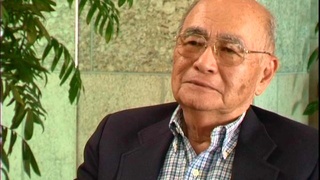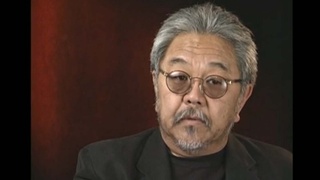Interviews
Leaving a camp to attend college
Well, I was one of the first ones I think to actually get released, although there are a lot of people that put their names in, and you had to get clearance from six different sources, the army, the navy, the FBI, this, this … local city, whoever is going to receive you, and the school that is going to accept me. The first people to get were to go to school.
So the American Friend Service Committee had a committee that worked hard to help us get this done, and the WRA set up relocation offices in the largest cities all over. Now, I went to Springfield College because that’s the YMCA training school, and I started my YMCA work just before Pearl Harbor in 1941. 1941, June, I started the Japanese YMCA. So I thought this would be wonderful chance to continue my education. So I was glad to get out.
Date: March 4, 2005
Location: California, US
Interviewer: Florence Ochi, Art Hansen, Yoko Nishimura
Contributed by: Watase Media Arts Center, Japanese American National Museum
Explore More Videos

Life in camp as teenager
(1926 - 2012) Scholar and professor of anthropology. Leader in the establishment of ethnic studies as an academic discipline

Hiding what happened in camp
(1922–2014) Political and civil rights activist.

Camp as a positive thing
(1922–2014) Political and civil rights activist.

His father describes the importance of photographing camp life
(1924-2016) Photographer and businessman.

Involvement in JACL
(b.1935) American born Japanese. Retired businessman.

Train ride to Jerome Relocation Center
(b.1913) Kibei from California who served in the MIS with Merrill’s Marauders during WWII.

Apprehension about leaving camp
(b.1909) Nisei from Washington. Incarcerated at Tule Lake and Minidoka during WWII. Resettled in Chicago after WWII

Difficulties finding apartment in Chicago after leaving Minidoka
(b.1909) Nisei from Washington. Incarcerated at Tule Lake and Minidoka during WWII. Resettled in Chicago after WWII

442 soldiers visiting U.S. concentration camps
(b. 1924) Political scientist, educator, and administrator from Hawai`i

Receiving a negative reaction from father upon asking about World War II experience
(b. 1939) Japanese American painter, printmaker & professor

Loss of happy-go-lucky adolescence in Puyallup Assembly Center
(b. 1923) Nisei from Washington. Resisted draft during WWII.

Memories of dusty conditions at Minidoka incarceration camp
(b. 1923) Nisei from Washington. Resisted draft during WWII.

Family life in a Japanese Canadian internment camp in Slocan
(b. 1920) Incarcerated during World War II. Active member of the Japanese Canadian community

Difference between experiences of youth and older people in WWII camps
(b.1929) Pioneer medical researcher in tissue transfer and organ transplantation.

Death of sister in October 1942
(1915 - 2011) Nisei florist who resettled in New York City after WW II. Active in Japanese American civil rights movement
